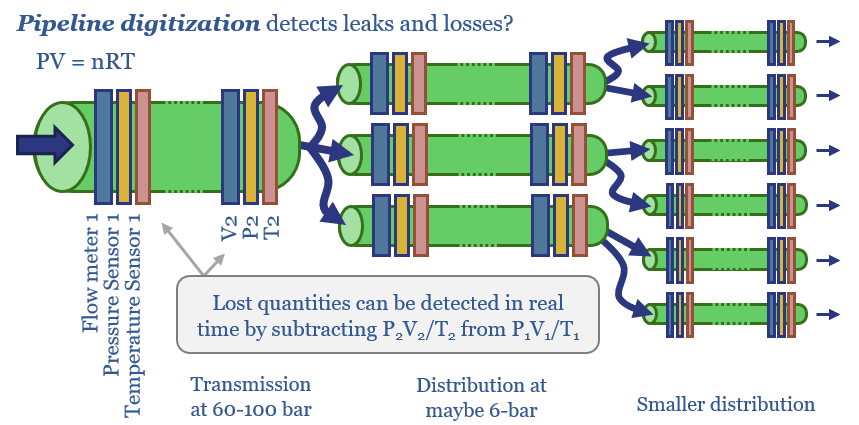Greater digitization of gas networks looks increasingly important, as gas, biogas, hydrogen and CCS all aim to shore up their futures. This 15-page note started as a deep-dive into the true leakage rates in downstream gas; and ended up finding opportunities in sensors and pipeline monitoring.
Gas sensing is going to be increasingly important, to detect and remediate leaks in the gas network. And all the more so, as gas networks aim to earn their keep in the evolving energy system, while perhaps expanding to include more biogas, hydrogen and/or CCS.
But debatably, there is little point to other clean initiatives if the industry cannot improve monitoring and leakage within its gas networks, and especially gas distribution networks. Our outlooks for biogas, hydrogen, CCS and US gas volumes are on pages 2-3.
Methane leaks matter for the future of gas value chains and require digitization of gas networks. Climate goals have now spawned a large drive to mitigate methane. The key numbers and breakdowns of methane leaks, by industry and sub-industry are re-capped on pages 4-5.
1-5% less gas is metered flowing out of a typical downstream gas network than flows in. This is known as Unidentified Gas (UIG) in the UK or Lost and Unaccounted For Gas (LAUF) in the US. These numbers are increasingly controversial and open the door to gas critics. Our review of the numbers and controversies is on pages 7-10.
Digitizing the downstream gas network is the most widely discussed solution, to detect and remediate leaks in real time, while also potentially lowering the operating and maintenance costs across the network. Costs of methane mitigation are stress-tested on page 11.
We have screened a dozen companies that are specialized in gas pressure sensing and monitoring, and added them to our screen of technologies for mitigating methane leaks. Sensing is a fascinating industry worth $200bn pa across all sectors. Our highlights and observations about these dozen companies are on pages 12-15.
